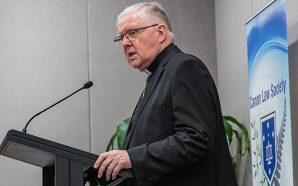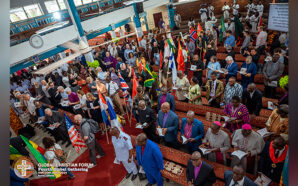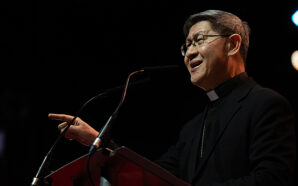Most Reverend Vincent Long Van Nguyen OFM Conv DD STL, Bishop of Parramatta
Homily for the Fourth Sunday of Easter, Year A, 2023.
Readings: Acts 2:14, 36-41; 1Peter 2:20-25; John 10:1-10
30 April 2023
Becoming a conduit for the God of life flourishing
Dear brothers and sisters,
We live in a world where power is often measured in terms of resource and influence. Hence, the most powerful nations are those with strong economy, political impact and global firepower. We Australians are proud of the fact that we punch above our weight. We are ranked much higher in the power index than other countries relative to our size. Yet rather seeking to increase more power, individually or collectively, the question is whether we should be guided by a vision of a better, safer and more sustainable world for all. We must be asking how human security both at home and abroad, and the security of all creation might be best served at this time where we are less peaceful, harmonious, egalitarian and sustainable community of life.
The Word of God on this fourth Sunday of Easter speaks to us of a God not of power in the conventional understanding. It teaches us that God reveals himself in powerlessness, humility and vulnerability. The God that Jesus embodies in his words and actions stands in solidarity with the downtrodden and gives himself away for their liberation. To follow Jesus, therefore, is to abandon the self-interest pursuit of power, wealth and influence. It is to take up the challenge of the cross and to emulate the self-giving God.
The early Christian community gives us an example of how they flourished in the face of many trials and tribulations that beset them. It was their faith in Jesus, not the size of their numbers, not the strength of their resources, not the popularity of their cause that determined the outcome of their mission. In fact, the beginning of the Church took place not at the moment of its glory but at the moment of its greatest vulnerability. It was the powerlessness of the Servant-Master that was the key.
The Acts of the Apostles that we have been reading from throughout the Easter season presents us with a small and vulnerable group of believers. They emerged from the turbulent period following the crucifixion, death and resurrection of Jesus. We are told that this early Church was poor, few in numbers, marginalized by the dominant society and persecuted by the authorities. Yet it was a powerhouse of prayer, love and solidarity. They showed to the world what it was like to live with neighbourly concern, compassion and communion.
In today’s episode, Peter shows the maturity of his faith. He boldly proclaims: “The whole House of Israel can be certain that God has made this Jesus whom you crucified both Lord and Christ”. This proclamation reflects a totally different vision of Jesus to the one he was obsessed with before. In one instance, if you remember, he professed Jesus to be the Christ but without the cross. He bought into the model of leadership that was predicated on power, dominion and self-interest. Now, Peter has made a 180-degree turn-around. It is the Crucified who is at the centre of his new life. In the second reading, he speaks of suffering as a privilege to be like Christ.
In the Gospel, Jesus uses the metaphor of the gate to speak about his life-giving love for others. We do not usually associate “gates” with freedom, wholeness and flourishing. Gates, fences and walls often conjure up images that remind us of separation, segregation and even imprisonment. In biblical time, sheepfolds were designed without a gate and, because predators or thieves might attack the sheep at night, the shepherd would lay across the entrance as the gate to the pen. He protected the sheep from danger, even stepping into harm’s way on their behalf. Hence, the gate in this sense refers to Jesus’ self-sacrificial love for others.
There is also another meaning to the sheep gate. It is the most important of the 10 gates around Jerusalem. It is the entrance through which sacrificial lambs passed on their way to the temple. The sheep gate also led to the sheep pool where the lame and blind gathered for healing. This metaphor, therefore, symbolizes Jesus as the source of life, healing and wholeness. As the sheep gate is the conduit to the temple, Jesus is the conduit to God. He is the way, the truth and the life.
Dear friends,
We are a community that proclaims and lives the power of the Crucified. In this time of diminishment, the paschal rhythm exerts itself even more intensely on the true believers. But as the early Christians showed the way, it is not prestige and affluence, but the essential quality for Christian living and witness that matter. We must make the discipleship of the cross the cornerstone of the Church again. Only by imitating Christ the living gate and the face of the self-emptying God can we be his credible witnesses and his conduit of love, mercy and compassion.
Let us pray we may continue Christ’s messianic ministry of sharing the Good News to the poor and that we become an alternative community that welcomes, protects and cares for the most vulnerable. May we be strengthened to be leaven to the kingdom through our active discipleship, witness and engagement in the world.








